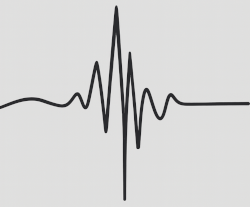

Two, and possibly three, significant earthquakes appear
to have struck the Sürgü–Misis Fault Zone (SMFZ) and the
western segment of the East Anatolian Fault Zone (EAFZ)
in 1114/5 CE. Although sources disagree on the exact year—
1114 or 1115, with most favoring 1114—they generally agree
on the dates of the two principal shocks: 13 and 29 November.
Many accounts state that both earthquakes occurred at night,
causing widespread casualties as buildings collapsed upon
a sleeping population. The affected regions included Crusader-
controlled territories and Armenian Cilicia, which seem to
have suffered more severely than neighboring lands under
Seljuk Turkish control.
These earthquakes were approximately bookended by two
major, well-dated battles between Crusader and Seljuk forces—
the Battle of al-Sinnabra on 28 June 1113 CE and the Battle of Tell Danith (also known as the Battle of Sarmin)
on 14 September 1115 CE. Multiple early chroniclers —
Walter the Chancellor,
Matthew of Edessa,
William of Tyre, and
Ibn al‑Athir —
date the 29 November earthquake to a time preceding the
Battle of Tell Danith1. This evidence strongly suggests
that the 29 November quake occurred in 1114 CE, implying that the
13 November event—reported by the contemporary and local source
Walter the Chancellor as preceding the later shock—also took place
in 1114 CE.
- The first earthquake struck on the
Feast of Saint Lawrence
(10 August) in 1114 CE. It is mentioned briefly by only one
contemporary source,
Fulcher of Chartres,
who was living in Jerusalem at the time. He wrote,
Later, on the Feast of St. Lawrence, there was an earthquake.
Fulcher did not describe any damage, but
Ryan (1969: 14) suggests that
Fulcher experienced the quake personally—implying localized shaking
in Jerusalem/Palestine, or possibly a powerful earthquake farther
north near Antioch,
Mamistra, or
Marash that was felt in Jerusalem2.
The former seems more likely, since contemporary chroniclers
Matthew of Edessa and Walter the Chancellor (of Antioch) make no
mention of a 10 August quake.
The anonymous
Estoire de Jerusalem et d’Antioche,
considered a heavily abbreviated vernacular version of the crusade
chronicle of Fulcher of Chartres
(French of Outremer Project),
also reports this event: At the feast of Saint Lawrence, an
earthquake affected us... all the towns and settlements along the
coast collapsed, thereby killing the inhabitants... The towns of
Marash and Trihalet3 collapsed in ruins.
Guidoboni and Comastri (2005) argued that
these descriptions actually refer to the 13 November earthquake,
suggesting that Estoire conflated the 10 August and 13 November
events. However, the spatial pattern of
IDPs indicates it is more
likely that Estoire conflated the 10 August and 29 November
earthquakes.
- The second earthquake occurred on the night of the
Ides of November (13 November)
in 1114 or 1115 CE. It was described by the contemporaries
Fulcher of Chartres and Walter the Chancellor, contemporaneous source
Abbot Anselm,
and the later Venetian chronicler
Andrea Dandolo.
While all agree on the date (13 November), they differ on the year.
Fulcher records that part of
Mamistra was destroyed.
Walter the Chancellor concurred, noting that
the greater part of
the town of Mamistra
collapsed with its citizens when an
earthquake struck on the
Feast of Saint Brice (13 November).
Writing from Belgium, Abbot Anselm reported deaths and damage in the
suburbs of Antioch, but this notice was likely
mis-dated and drawn from reports of the later 29 November quake.
Dandolo, summarizing earlier accounts, added that Cilicia and
Mamistra were particularly devastated, and that people wandered
through the fields afterwards, fearing that they would be swallowed
up by the earth
—a vivid image suggesting ongoing aftershocks.
- The third earthquake struck on the night of 29 November, the eve of
the Feast of Saint Andrew, in 1114 or 1115 CE. It is attested
by numerous chroniclers, including
Walter the Chancellor;
Matthew of Edessa;
Ibn al-Jawzi;
Michael the Syrian;
Chronicon Ad Annum 1234;
Kemal ad-Din ( Ibn al-Adim );
the
Chronicle of Smbat Sparapet;
and
Bar Hebraeus.
The persistence of this event in the historical record suggests that it
was the most destructive earthquake of the 1114/1115 CE sequence.
Contemporary observers Walter the Chancellor and Matthew of Edessa left
especially detailed accounts. Writing in Antioch, Walter described “an immense and terrible earthquake in Antioch and its region,” noting that panicked inhabitants fled their collapsing homes. “When morning came, the vast scale of the wretched disaster was clear beneath the ruin both of men and of other things.” He reported that
Marash was “entirely destroyed with its lord and bishop, the clergy and all the people,” and that
Mamistra had also suffered heavily. Similar devastation was imagined at
al-Atharib and “other Antiochene lands.” Walter further described aftershocks: “each day, the earthquake threatened for hopeless hours.” He noted that the citizens of Antioch lived outdoors through the winter, fearing further collapses, and later wrote of a “danger of threatening earthquake for five months,” implying prolonged seismic activity. Walter alone dated the event to 1115 CE; all other sources assign it to 1114 CE.
Matthew of Edessa, likely writing from a monastery near
Kaysun, recorded rockfalls, landslides, and the cries of those trapped beneath rubble. He too mentioned continuing aftershocks and reported devastation from
Samosata to
Hisn-Mansur,
Raban, and
Kaysun itself. In probable hyperbole, he claimed that
Marash had no survivors and that 40,000 perished;
Mamistra was again said to be ruined. Matthew further mentioned damage to monasteries in the Black Mountains, including the Basilian Monastery, the great Jesuit monastery near Marash, and perhaps Mashchgavor (Mashkur). After the quake, he wrote, snow covered the land.
Later chroniclers sometimes conflated the 13 and 29 November earthquakes, making it difficult to assign specific damage to each event. Nevertheless, the 29 November earthquake appears to have caused destruction in
Harran,
Balis,
Azaz,
Ablastha,
Zerdanah, and
Aleppo, although Aleppan historian Kemal ad-Din stated that damage in his city was limited. This earthquake was likely the “greater quake” mentioned by
Fulcher of Chartres, following the 13 November shock. Fulcher’s later reference to an earthquake in 1115 CE may represent a mis-dated retelling of these two events—or perhaps reflects continuing aftershock activity through early 1115, consistent with Walter the Chancellor’s report of five months of seismic unrest after the main shock.
- In Section 1.2, after describing the earthquake,
Roger of Salerno,
ruler of the Principality of Antioch, is said to have repaired
earthquake-damaged fortifications
(Asbridge & Edgington 2019:84).
Roger’s scouts then reported that there was official rejoicing in
“Persia” (i.e., Baghdad) over Syria’s ruin and that the
Sultan of Baghdad, Ghiyath al-Din Muhammad Tapar,
had mustered an army to exploit weakened defenses
(Asbridge & Edgington 2019:86–87).
The narrative then leads into the
Battle of Tell Danith:
Bursuq ibn Bursuq invaded,
failed at Edessa, and turned toward Aleppo, prompting an alliance of
Luluʾ (de facto ruler of Aleppo),
Tughtigin of Damascus, and
Ilghazi of Mardin—soon joined by
armies from all four Crusader states (Edessa, Antioch, Tripoli, Jerusalem).
After indecisive moves, Roger ambushed and routed Bursuq at Tell Danith on
15 September 1115 CE. Notably, Ibn al-Jawzi mentions a letter received in
Baghdad describing the 29 November earthquake.
- Antakya (Antioch), the nearest major locale, lies ~500 km from
Jerusalem. A worst-case magnitude of 7.5 would yield an intensity near
5.36 in Jerusalem—strong enough to be felt—per
SEISCALC.
- Ryan (1969:210 n.5)
notes that “Trialeth cannot be identified,” citing Hagenmeyer’s suggestion
that it may be Balis on the Euphrates,
scene of an earthquake in A.H. 508 (7 June 1114–26 May 1115), reported by
Sibt Ibn al-Jawzi (RHC, Or., III, 551–52; HF 580 n.12).
Ambraseys (2009)
proposes
Tell Khalid (Trialeth),
a fortified site at the head of the Sajur (Sadjour Suyu)
.
Guidoboni & Comastri (2005)
suggest Trihaleth is present-day
Akçakoyunlu.
- Ambraseys (2009)
observes that Walter oddly places the event in 1115—after locusts
(presumably of 1114) but before the Ilghazi–Tughtigin alliance,
which other sources date to 1114. Anchor points in brief:
- Fulcher describes locusts (Jerusalem area) in April–May 1114 CE;
Walter mentions locusts in “almost the whole region of the eastern
Christians,” without month or year, but prior to the 29 November shock
(which he dates to 1115 CE).
- On the Ilghazi–Tughtigin alliance:
Ibn al‑Athir dates it to A.H. 508
(7 June 1114–26 May 1115) and before the
Battle of Tell Danith
(14 September 1115) (Richards 2006: Part 1, 248).
Matthew of Edessa places it in Armenian year 564 (21 Feb. 1115–20 Feb. 1116),
also before the battle
(Doustourian 1993:219).
Tell Danith is likely the firmer anchor, being a major, well-dated engagement.
- Location uncertain. “Basilian”
indicates adherence to the Rule of St. Basil.
Ambraseys (2004:741)
refers to
Shoughr, the monastery of the Basilians on the Black Mountains (Lersar),
between Marash and Sis (Missis/Kozan), about 50 km from Marash (Dulaurier 1861)
.
From Houshamadyan:
Monastery (Hermitage) of Shughr
One of the prominent monasteries of Cilicia, it was a center of learning.
Its precise location is unknown. Writers offer conflicting claims and often
equate it with the Garmir (Red) Monastery of Kesun. Ghevont Alishan notes,
“Someone says it is in Marash or Sis, another, in Kesun…” In his “History,”
Vartan the Historian writes: “The hermitage of Shughr is probably southwest
of Marash.” Father Ghazarian regards it as part of the Red Monastery of Kesun,
located in the Andırın-Dongala valley between Marash and Sis, where vestiges
(arches of the altar, part of the roof) were reportedly visible until recently.
- Location also uncertain.
Ambraseys (2009)
places it at Esouancʿ near
Marash;
Ambraseys (2004:741)
notes Matthew also describes a similar collapse at the monastery of Hiesuvank near Marash.
- In Matthew of Edessa’s account,
Ambraseys (2009)
infers that the Armenian physician Gregory, surnamed Maschguévor, died in an
earthquake at this monastery. Ambraseys adds that the
“monastery of Mashchgavor (Mashkur) … must be sought near the northern
Amanus (Gâvur Dağı).”